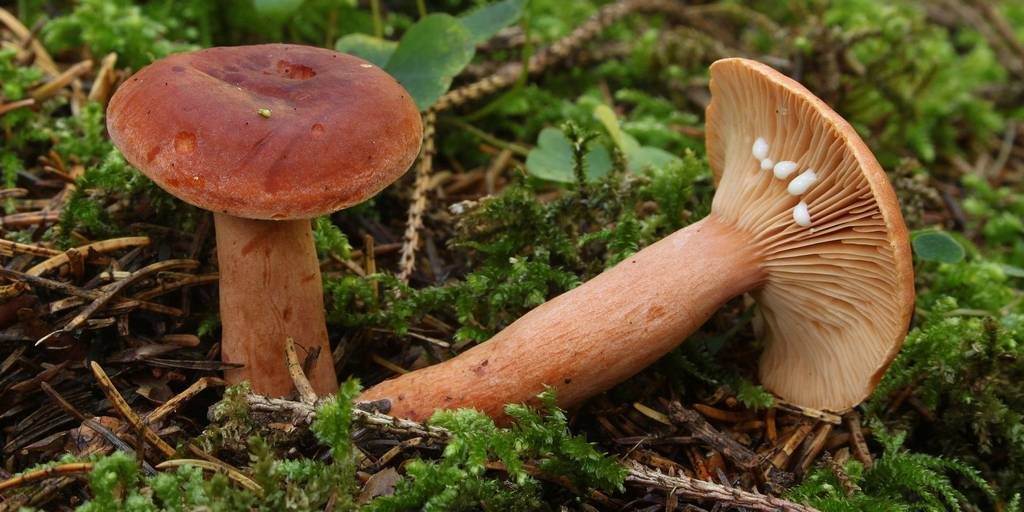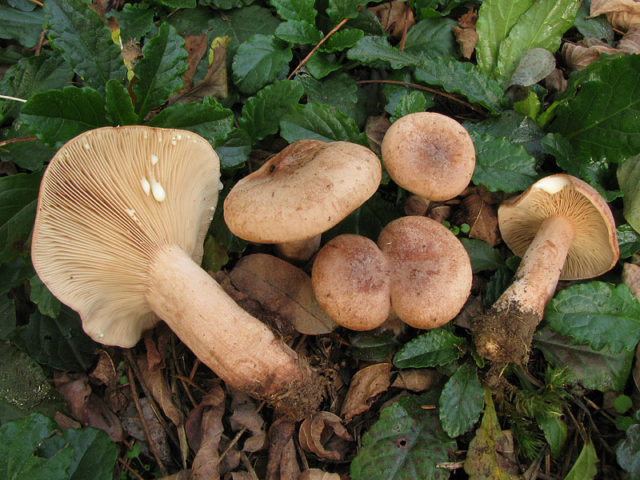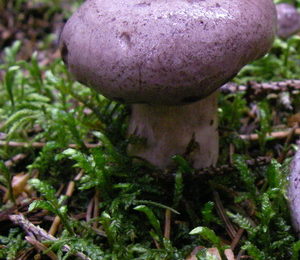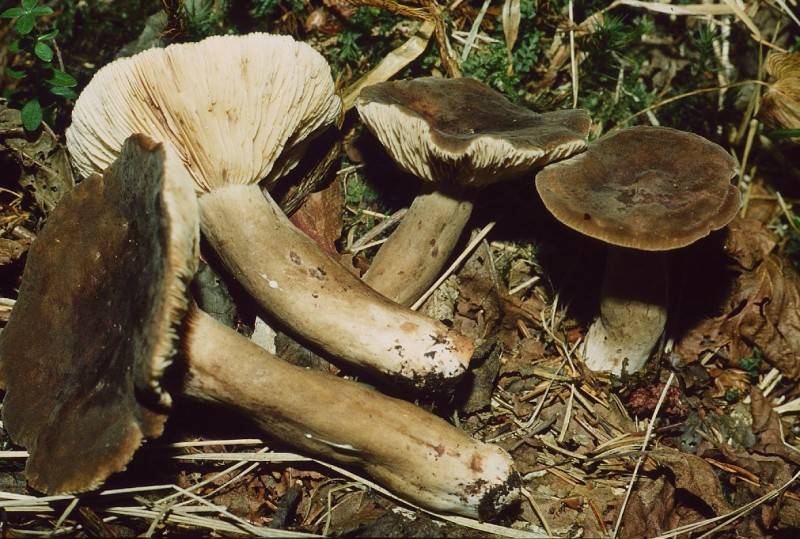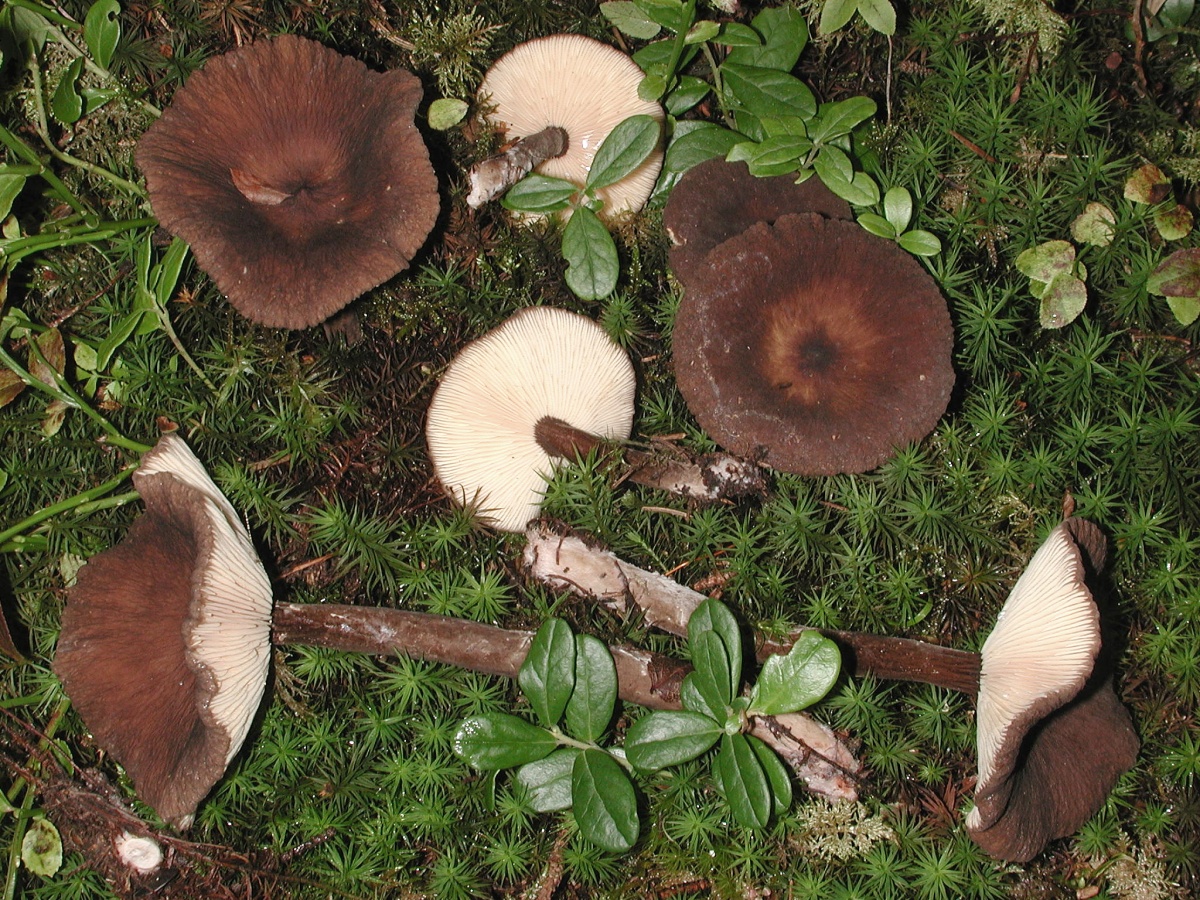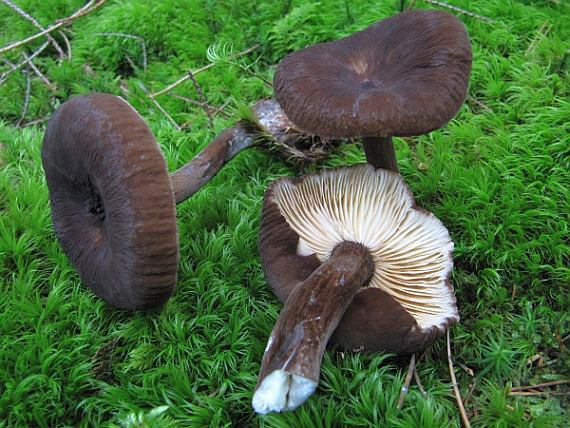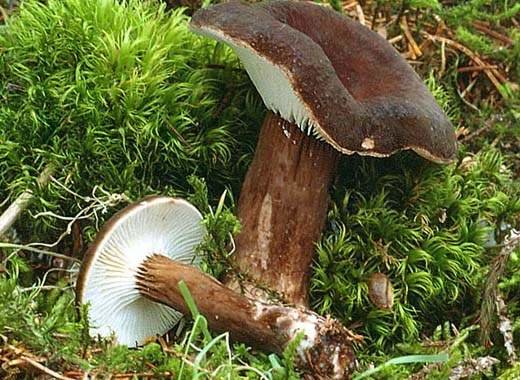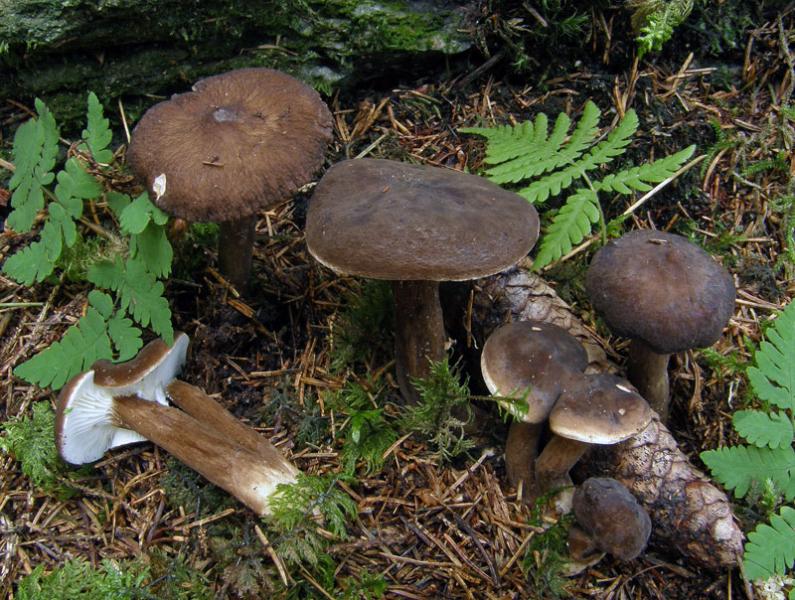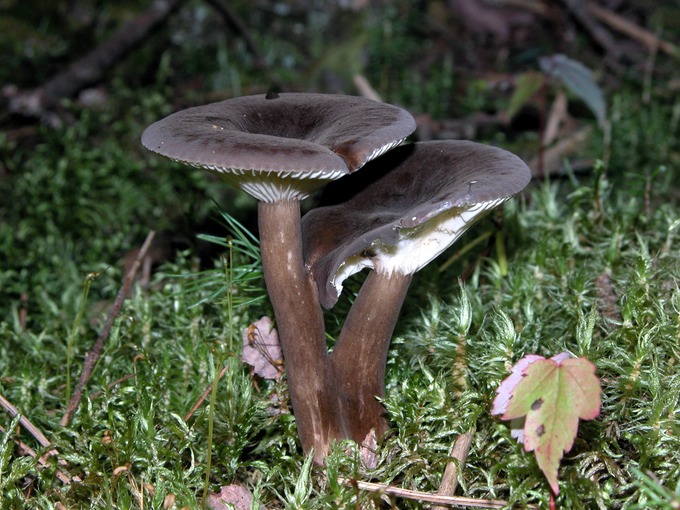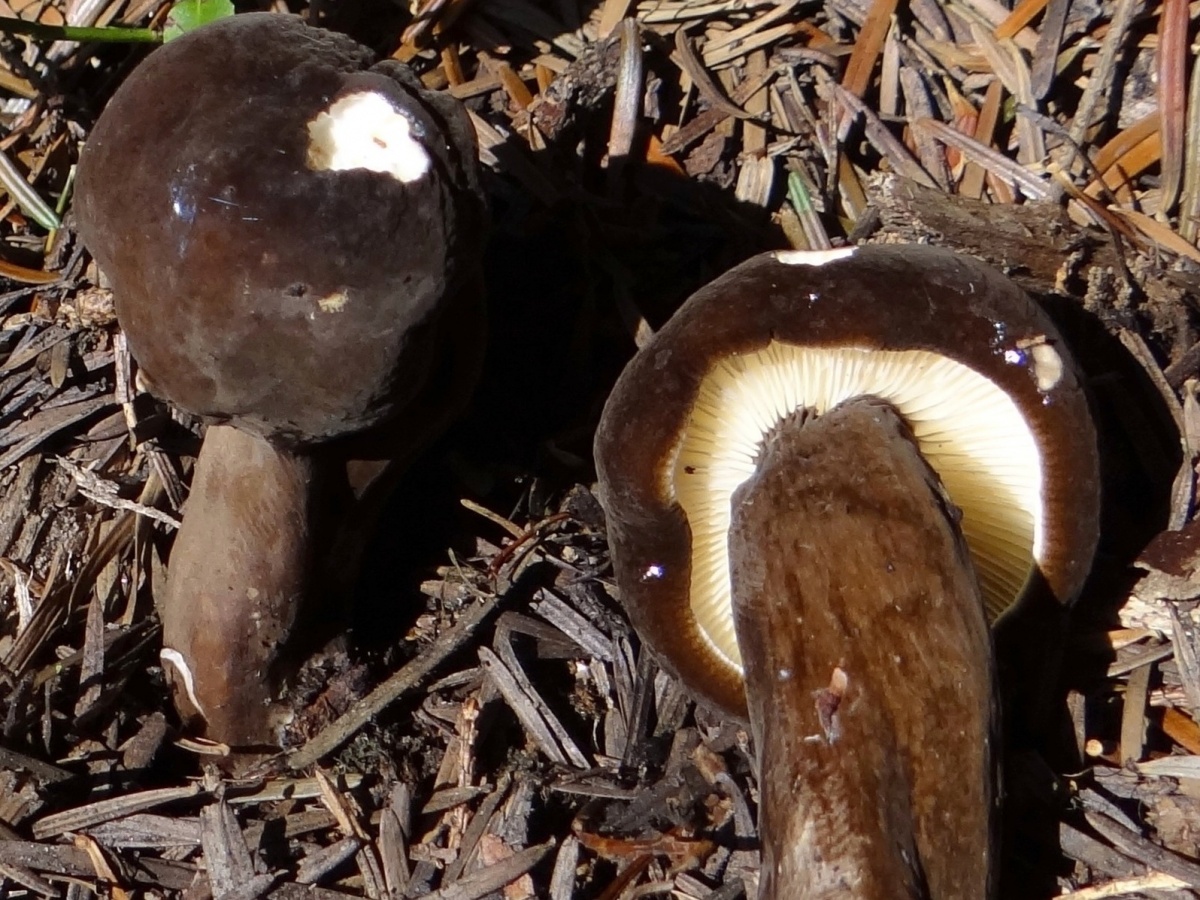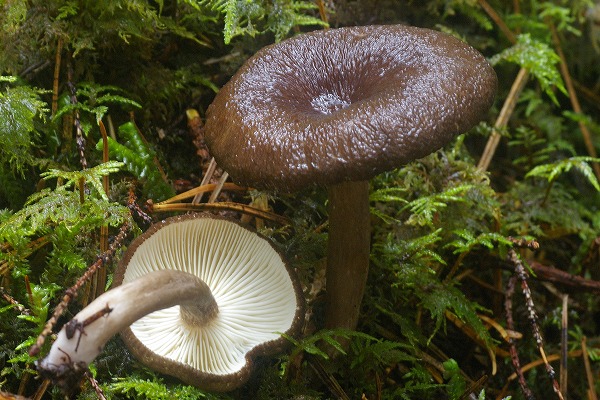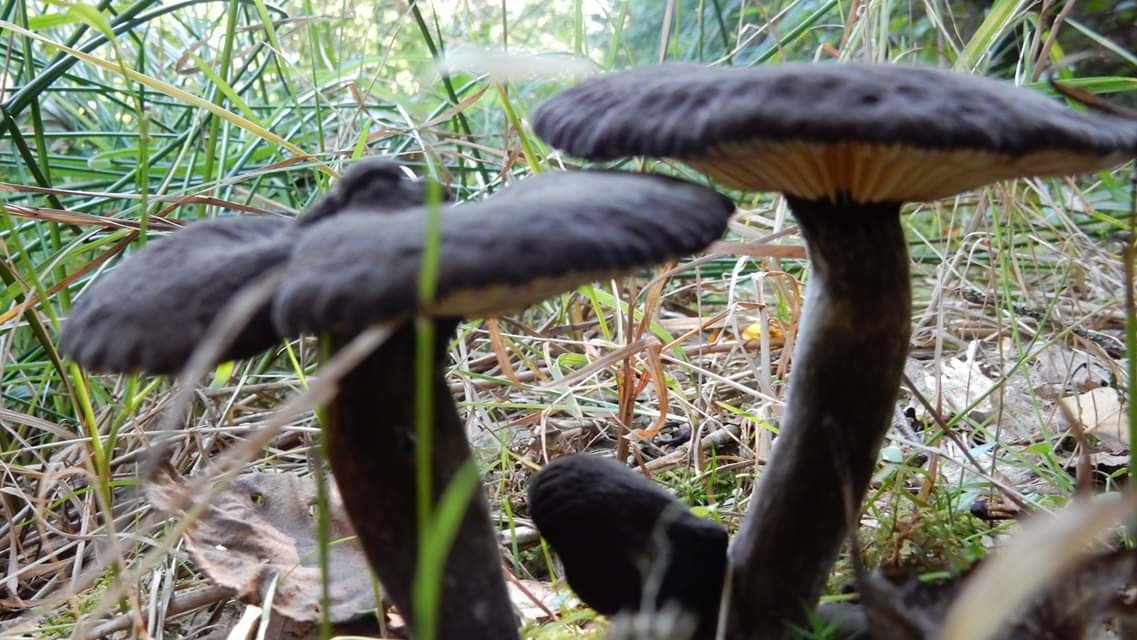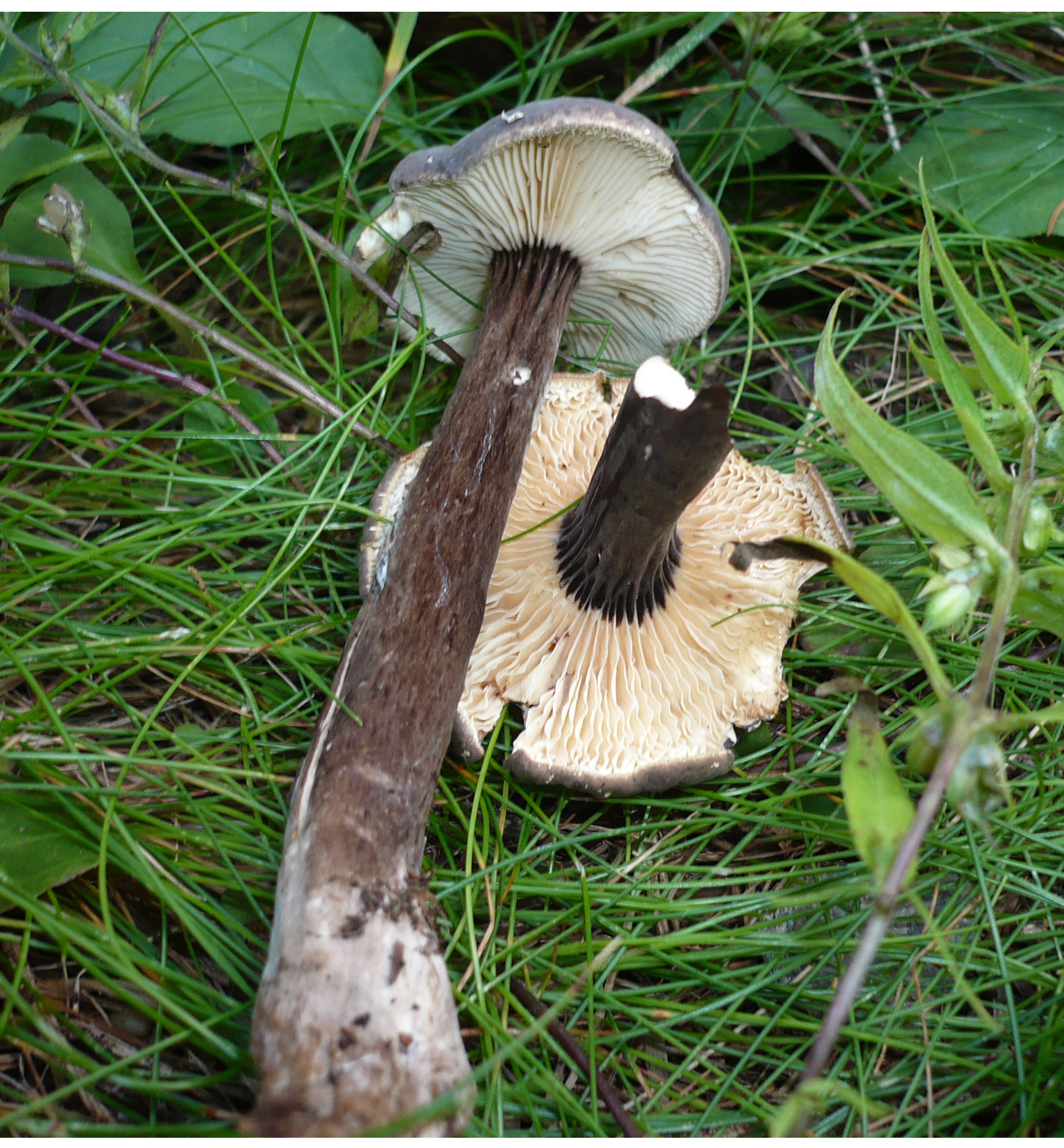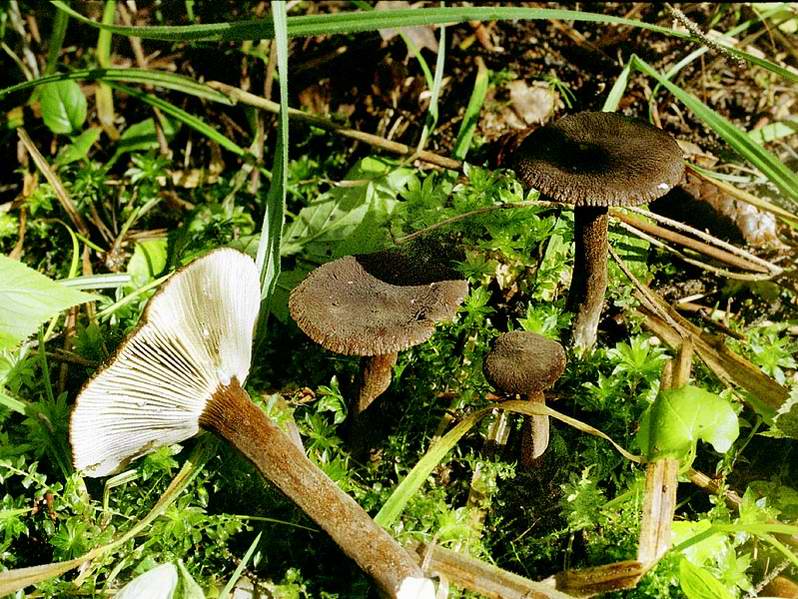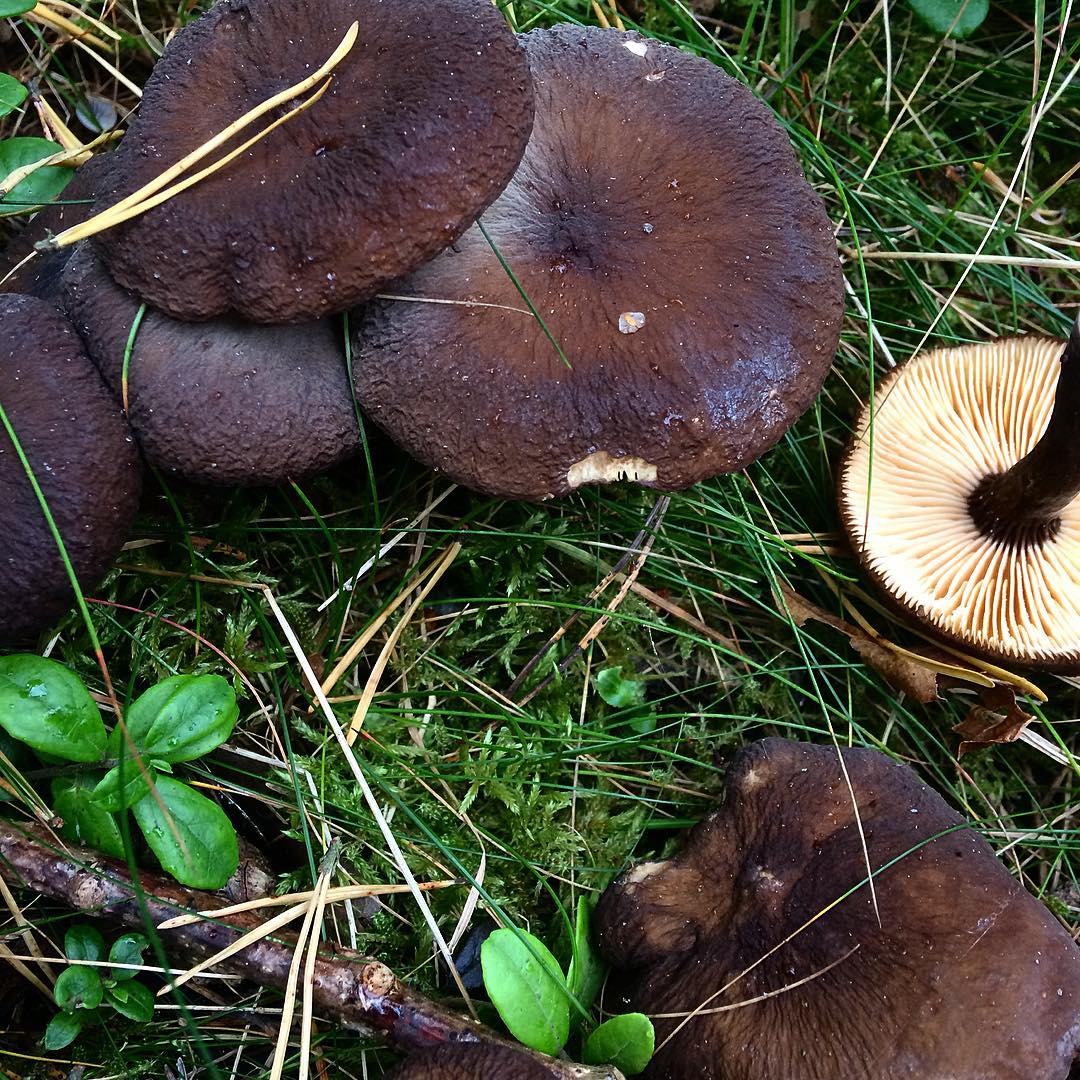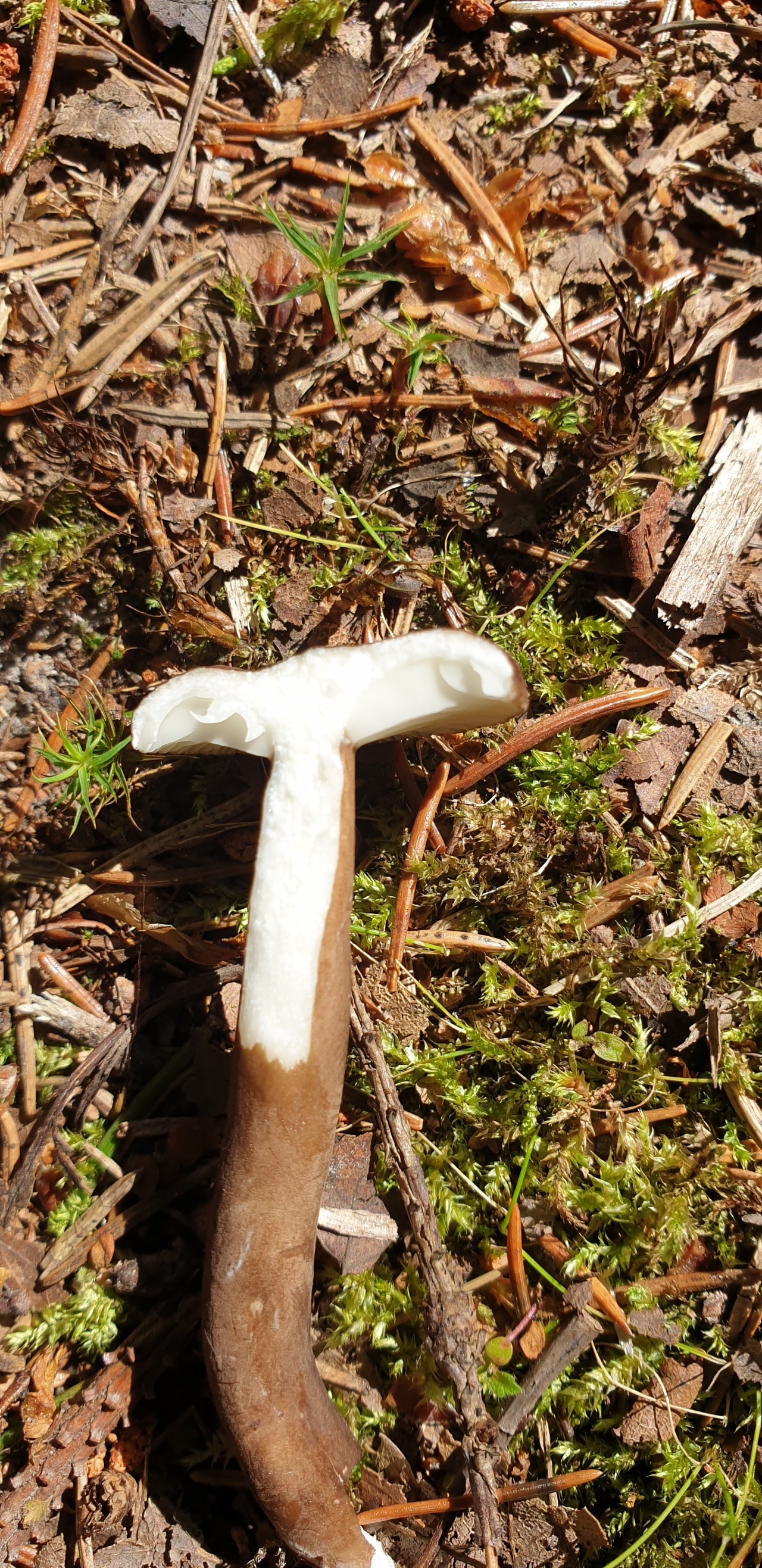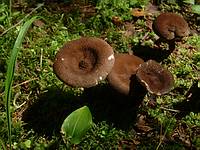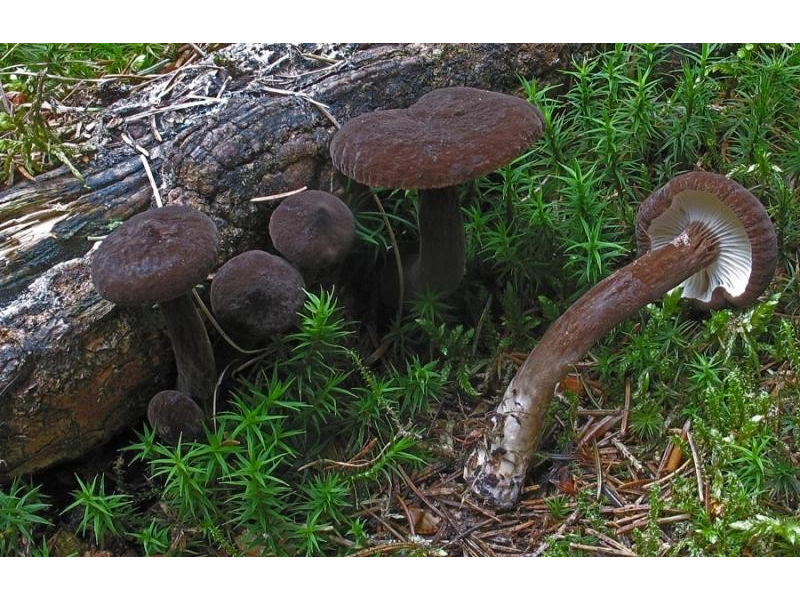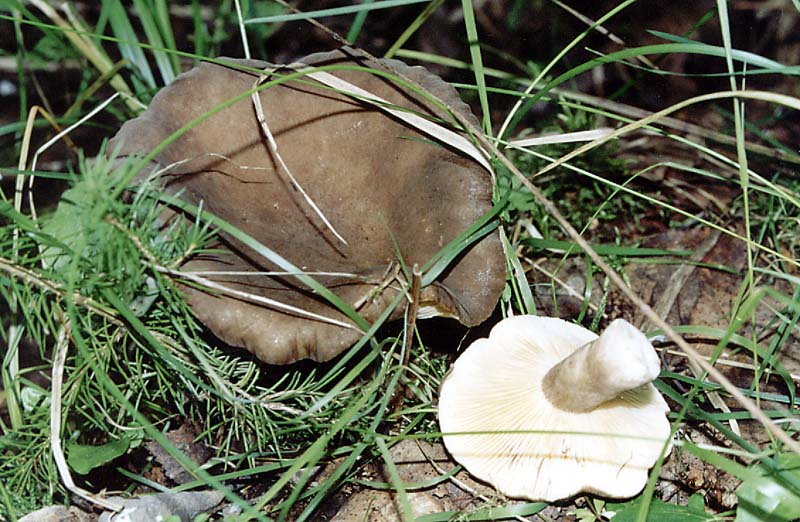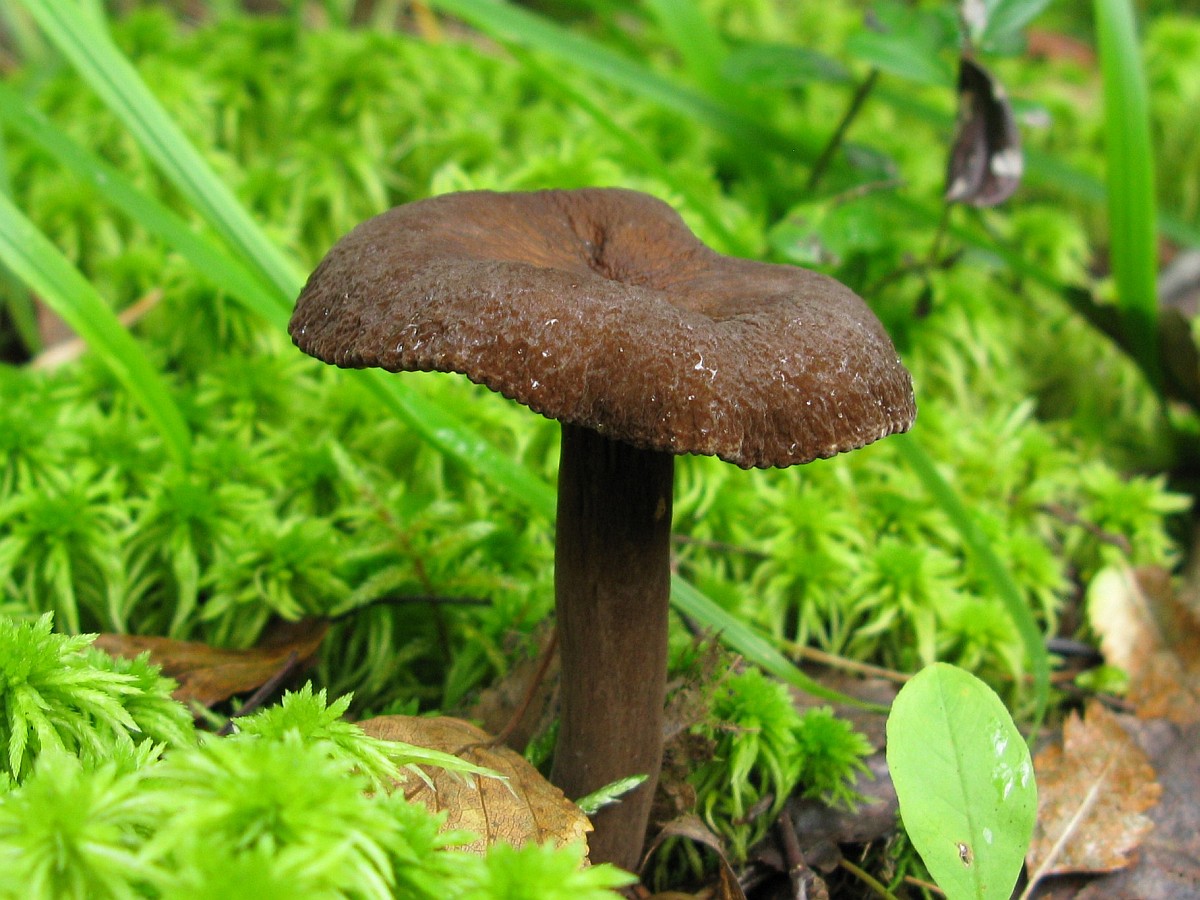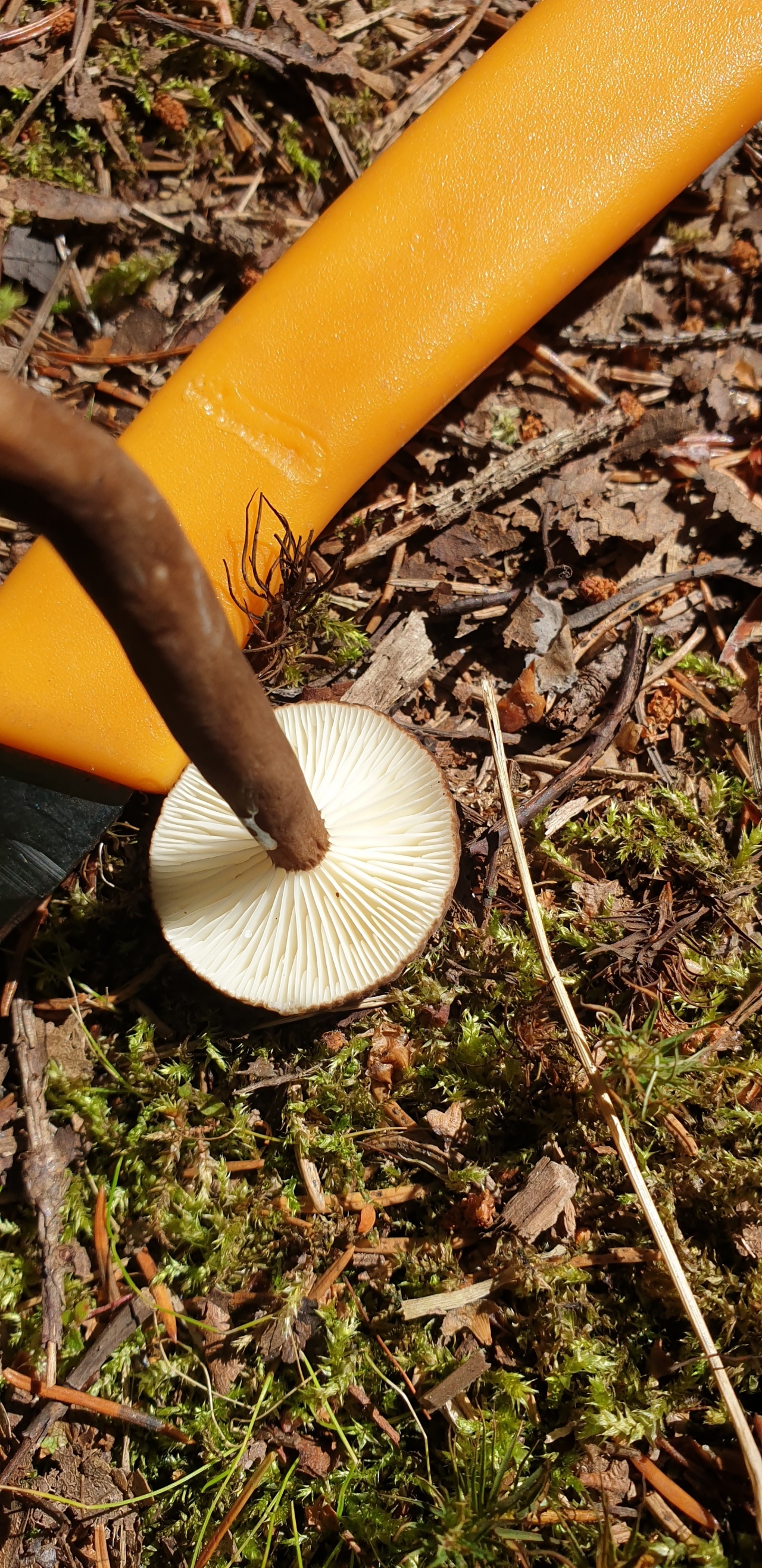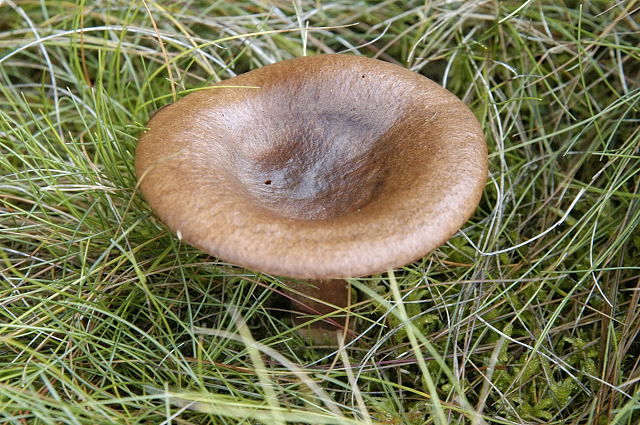External description of the mushroom
The fruiting body of a wet lactarius consists of a stem and a cap. The height of the leg is 4-7 cm, and the thickness is 1-2 cm. Its shape is cylindrical, slightly widening at the base. The structure at the foot is strong and durable, and the surface is sticky.
It is very rare to meet this type of mushroom, a distinctive feature can be called the color of the cap, which varies from grayish to gray-violet. Its diameter is 4-8 cm, in young mushrooms it has a convex shape, which becomes prostrate over time. On the surface of the cap of old, mature mushrooms, there is a depression, as well as a wide flattened tubercle. The edges of the cap are bordered with small villi and bent. From above, the cap is covered with a grayish-steel skin, with a slight shade of purple. It is wet, sticky and smooth to the touch. These characteristics are especially common in humid climates. A vaguely expressed zoning sometimes appears on the surface of the cap.
The hymenophore of the fungus is represented by plates containing white spore powder. The plates themselves have a small width, are often located, slightly descend along the stem, initially have a white color, but turn yellow over time. When pressed and damaged, purple spots appear on the plates. The milky juice of the fungus is characterized by a white color, but under the influence of air it acquires a purple hue, its release is very abundant.
The structure of the mushroom pulp is spongy and tender. It does not have a characteristic and pungent smell, but the taste of the pulp is distinguished by its sharpness. In color, the pulp of the wet lactarius is white or slightly yellowish; in case of damage to the structure of the fruiting body, a shade of purple is mixed with the main color.
Mushroom common lactarius and its photo
Category: conditionally edible.
Lactarius trivialis cap (diameter 5-22 cm): shiny even in dry weather, with dark rings. Changes color and shape depending on the age of the fungus: in young mushrooms, it is dark and gray-gray, rather convex; in old ones, purple and brown, and then ocher or yellow, flatter and even depressed. Dense, maybe with small dimples. The edges are wavy, curved, often curled inward.
Stem (height 4-10 cm): pale gray or light ocher, cylindrical, sometimes swollen, but always hollow. A bit slimy and sticky.
Pay attention to the photo of an ordinary milkman: its plates are frequent, thin (occasionally wide), mostly yellow or cream in color, with rusty spots. Pulp: thick and fragile
Mostly white, but brownish under the skin itself, and red at the base. Milky sap is very bitter; when interacting with air, it changes color to yellow or slightly greenish. Has a peculiar smell reminiscent of fishy
Flesh: thick and fragile. Mostly white, but brownish under the skin itself, and red at the base. Milky sap is very bitter; when interacting with air, it changes color to yellow or slightly greenish. Has a peculiar smell reminiscent of fishy.
Doubles: none.
When it grows: from mid-July to late September.
Where to find it: In humid places and lowlands of all types of forests, most often near pines, spruces and birches. Hides in dense grass or moss. An ordinary milkman is not afraid of pests.
Eating: fresh or salted, subject to pre-soaking to remove bitterness. When cooking, it changes color to bright yellow or orange. It is very popular in preparations for housewives in Finland.
Application in traditional medicine: not applicable.
Other names: gladysh, alder, nest, yellow nest, gray lump.
Faded milky: photo and application
Category: conditionally edible.
Faded lactarius cap (Lactarius vietus) (diameter 4-9 cm): gray, lilac, lilac or gray-brown, eventually fades to white or grayish. Slightly convex or outstretched. The center is slightly depressed, but with a slight tubercle and usually darker than the edges, which are curved towards the inner side. The surface is often uneven. Sticky and damp to the touch, with sticky twigs or leaves.
As you can see in the photo, the faded lactarius has an even, sometimes slightly curved leg. Its height is 5-9 cm. The color is white or light brown, lighter than the cap. The shape is cylindrical.
Plates: thin, narrow and very frequent. Cream or ocher in color, gray at the point of depression.
Flesh: white or gray, with a pungent milky juice. Thin, very fragile.
Doubles: none.
When it grows: from mid-August to early October.
Where to find: in deciduous and mixed forests, especially near birches. Prefers damp and swampy places.
The use of faded lactarius in cooking is limited - since the flesh of the mushroom is very thin, it is not very popular. Only the largest specimens are salted and pickled.
Application in traditional medicine: not applicable.
Other names: sluggish milky, marsh wave.


